This Storied Lisbon Hotel Is Made Up of Two Historic Palaces and a Mansion
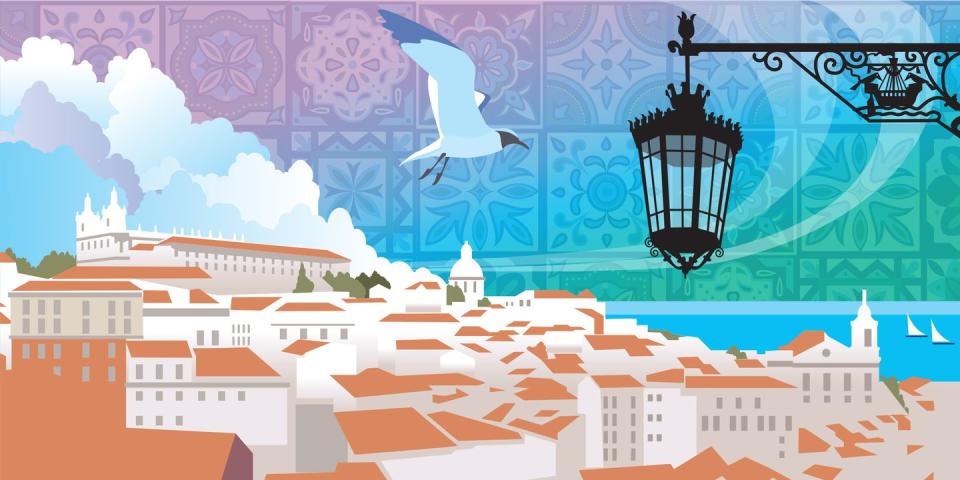

Portugal was a bit late to the game in making a name for itself on the world design stage, hanging back quietly in the shadows as its flashy southern European neighbors claimed the spotlight. But in recent years, the Portuguese capital has come alive as one of the new international capitals of cool. Lisbon is positively brimming with new excitement, as international creatives are flocking to the city and setting up shop beside Portuguese traditionalists. From the beautiful packaging of heritage brands like Claus Porto to the colorful azulejos (tiles) that decorate building facades, visual inspiration is everywhere.
Since Lisbon is so dense with beauty and wonder (some of which is utterly hidden), it can be hard to ferret out all the best places. So we tapped five of the coolest local creatives we know—visual art director and concept creator Juliana Cavalcanti, artisan researcher and curator Felipa Almeida, architect Michael Miranda, interior designer Gracinha Viterbo, and lifestyle journalist and author of the new Portugal: Art de Vivre et Création, Sergio da Silva—to share their design-centric must-sees.
Where to Stay
Valverde Hotel
Nearly everyone we spoke to raved about this Relais & Châteaux hotel on Lisbon’s most prestigious avenue. “It’s very welcoming, not intimidating,” says Cavalcanti. “It’s amazing quality,” adds Miranda. “I like that it’s small—it’s homey, people are friendly. I like the [old-school metal] key. It’s like a home away from home.”
BOOK NOW
Bairro Alto Hotel
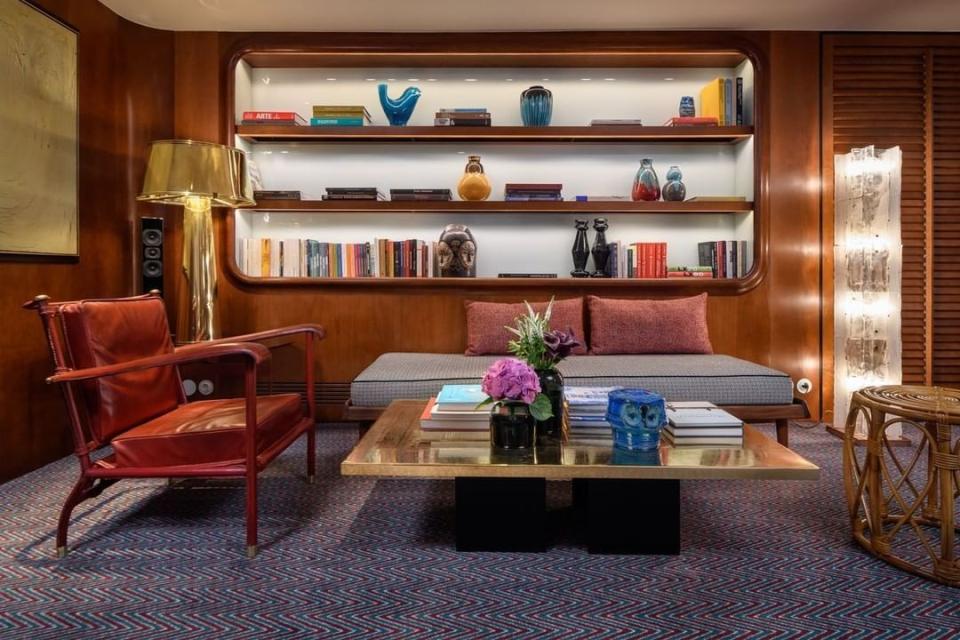
Miranda cites the location—“you can walk anyplace downtown”—and rooftop terrace with its incredible view as reasons to check into this recently expanded hotel.
BOOK NOW
Dona Graça
“It feels like you’re in a village in the countryside rather than the city center,” says da Silva of this small apartment centered around a garden courtyard with a swimming pool. “It doesn’t feel like an international hotel. It’s like a little house in the middle of nowhere.”
Santa Clara 1728
Simplicity and serenity are the guiding principles of this six-room hotel in a beautifully restored 18th-century house on one of Lisbon’s most romantic squares, a favorite of Cavalcanti’s.
BOOK NOW
Torel Palace

“I love the way it feels like an old mythic hotel, but in fact it’s very new” as a hotel, says da Silva of this gracious accommodation, which comprises a pair of restored historic palaces and a mansion. “I like the big old hotels, and it has that mood.”
BOOK NOW
Four Seasons Hotel Ritz Lisbon
“It’s an icon,” Miranda says, simply, of the hotel—an emblematic architectural piece of 1950s Portugal, full of Art Deco touches and works from some of the most important Portuguese artists of the era. Many of the city’s creatives frequent it during the day as well. “Lunch at the Ritz bar never fails. I love everything about it, be it for work or pleasure,” says Viterbo.
Where to Shop
A Vida Portuguesa
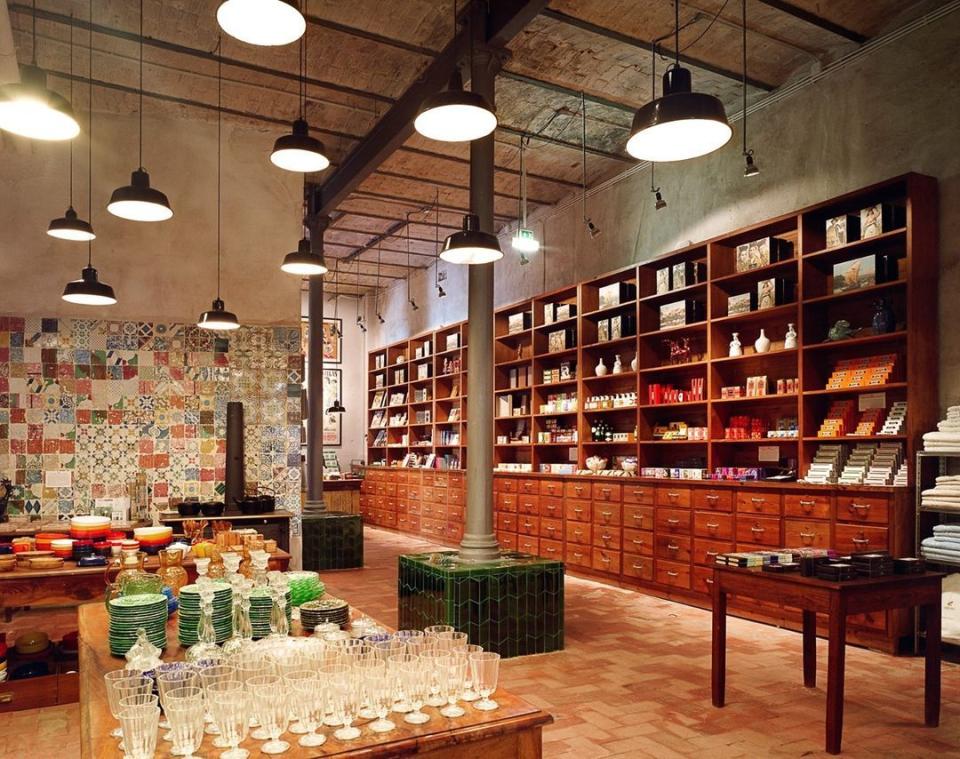
“Obviously I have to talk about A Vida Portuguesa,” says Almeida of the concept shops whose name means “the Portuguese life.” “It’s an icon in Lisbon and a very complete project, very relevant. It’s a must-go.” Da Silva goes even further: “There should be a Vida Portuguesa in every major city around the world.”
Objectismo
Almeida appreciates the collection of mid-century Portuguese ceramics. The proprietor, Nuno Lopes Cardoso, has very good taste, she says.
Home Core

Cavalcanti is a fan of this new sustainability-minded concept store, which sells up-cycled clothing for men and women and items that are designed to last a long time.
Caza das Vellas Loreto
This antique candle shop—it dates from 1789—sells “the most amazing colors,” says Almeida. And it’s part of the Lojas com História project, which aims to preserve and celebrate the city’s historic shops. “It’s the same people selling the same candles. I’m glad they still exist.”
Cocoon Atelier
At the same time, Almeida appreciates the new boutiques that are changing the face of Lisbon—like Cocoon Atelier, a shop specializing in art, textile, and clay products made by Portuguese and UK artists for calm and flow. “It’s great that new people are coming from outside and bringing new things. It’s so interesting to have these interactions.”
Somewhere a Process
This concept shop for home goods is owned by “a French woman with really good taste,” says Cavalcanti. “It’s nice stuff, nicely done.”
Cortiço e Netos
“The tiles tell the story of the architecture of Portugal between 1960 and now,” says da Silva of this shop, which specializes in vintage azulejos, as Portugal’s famous tiles are known in Portuguese. “And it’s a story about family. The grandfather started the business in the 1970s, and now the grandsons are selling the ends of the series.”
Luvaria Ulisses
The decoration of this tiny glove shop, a favorite of Miranda’s, is virtually unchanged since it was founded in 1925—all empire-inspired furniture that’s perfectly integrated with the neoclassical facade. The gloves themselves continue to remain high-quality, and are predominantly custom made.
Origem Comum
Da Silva likes the way this small new boutique combines traditional Portuguese artisanship with contemporary, globally-inspired design.
Companhia Portugueza do Chá
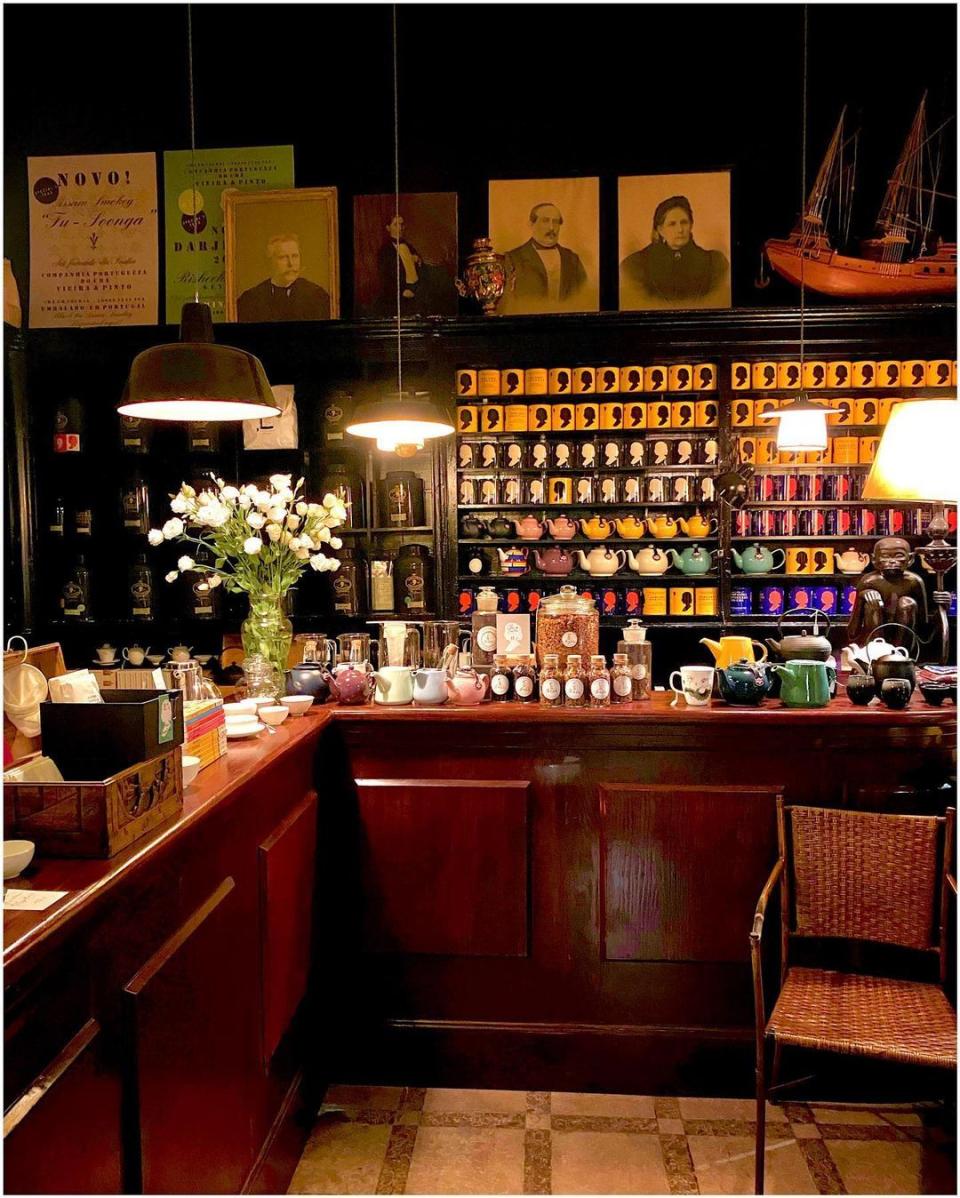
“It’s a beautiful store with nice people and a good product,” says Miranda of this gorgeous tea shop in an old shoe store that dates from 1880.
LX Lapa
Da Silva is a fan of this new concept shop—tucked in a beautiful old Art Deco palacete—which stocks Portuguese and Scandinavian vintage furniture, art, sculpture, plants and beyond.
Cavalcanti also suggests a stroll along Rua Dom Pedro V and Rua da Escola Politéc-
nica, the high street of the posh Principe Real neighborhood with stops at Shon Mott, Bernardo Atelier, Amazing Store, Embaixada, and Real Slow Concept Store.
Where to Eat
SEM
“I think they’re doing an amazing job,” says Cavalcanti of this new zero-waste restaurant. “It’s really aligned with the things I believe in. The floor is made of shoe rubber, the tables are recycled plastic bags, and the lamps are recycled paper.” And the delicious food is no less rigorous.
O Velho Eurico
This project from a young generation of cooks is making “rebel traditions,” says da Silva. “I like the irreverence and I love the atmosphere. It’s like an antique tavern full of young people.”
Praia no Parque

Almeida especially likes the sushi counter, where chef “Lucas Azevedo is so talented, it’s a beautiful project.” Aside from the excellent food, the restaurant is notable for occupying an important 1950s building.
Café de São Bento
“The best steak frites in town is at the discreet Café de São Bento,” says Viterbo. “You have to knock on the door for them to open. It’s on the best antiques street in town (Rua de São Bento) and frequented by intellectuals, politicians, and creative minds.”
Taberna do Calhau
“I love the simplicity, the informality, and the richness of the history of this project, says Almeida about this Alentejo-style tavern whose namesake chef turns out deeply satisfying comfort food.
Esencial
“Amazing food, really minimalist,” says Cavalcanti. Da Silva adds, “It’s French-style with Portuguese products.”
Osteria
“The first time I went there, the music was Madonna, we were eating Italian food and drinking Portuguese wine, and I thought I was in heaven,” recalls Miranda about this authentic, Italian-owned neighborhood joint.
Gambrinus
“This iconic and timeless restaurant is a must while in Lisbon,” says Viterbo. “Everyone goes there, from politicians to Lisboetas or the well-informed expats. They are open until late and are a go-to after the theater.”
SeaMe
“It’s like an old peixaria [fish canteen] but with a new concept,” says da Silva, citing the cooks’ skills with traditional cooked fish and newfangled sushi.
Fiametta

“I love lunch or dinner at the best Italian restaurant in town. The owners are from Rome, and everything is fresh and delicious,” says Viterbo, adding that “it’s been compared to the Parisian Le Cherche Midi in Saint-Germain-des-Près.”
Da Noi
“They did great work with the atmosphere,” says Cavalcanti of this jewel box of a restaurant run by alumni of Lisbon’s trendiest restaurant, JNcQUOI. “The design is cute and it’s good for a night out with friends.”
Antigo Restaurante 1 de Maio
“If you want an authentic Lisbon experience, try this tasca [tavern],” suggests Viterbo. “1 de Maio is a classic for the simple but great food, and it’s where our Nobel literature prize winner, José Saramago, used to have lunch and discuss his ongoing novels.”
Where to Drink
Café São
“It’s simple and breathable,” says Cavalcanti, who especially likes the big windows and tasty, gently priced breakfasts and lunches, as well as the specialty coffee.
Dear Breakfast Alfama
Da Silva especially likes the newest location of this mini-chain. “I love the architecture,” he says of the former warehouse space. “And what you see on the plate is beautiful for your eyes and good for your health.”
Marquise
Walking past the Mobler furniture store, you would never know that one of the city’s cutest cafes is tucked away in the back. Cavalcanti likes it for the “amazing bread” and the general vibe.
Senhor Uva
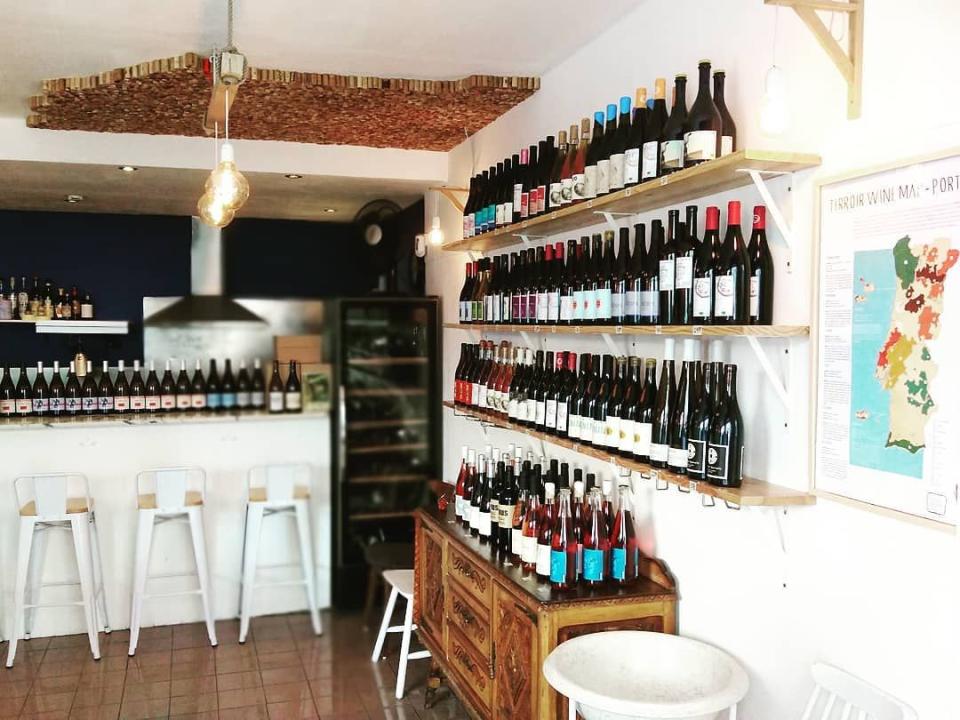
“Everything is good about it,” says Almeida of this minimalist wine bar, which has an emphasis on natural and low-intervention wines and vegetarian small plates.
Procópio
“It looks like you’re entering an Indiana Jones movie, with all the carpets and vintage lampshades,” says Miranda of this 1920s-style cocktail bar.
Where to Explore
Calouste Gulbenkian Foundation
Cavalcanti says this impressive complex is her “favorite for everything”—a museum with an enormous private collection that spans from the Egyptian age to the 20th century; the cultural series of jazz and classical concerts; and the gardens. “And I love the building. It’s brutalist—modern, beautiful architecture.”
Parreirinha de Alfama
Viterbo says this is the best place to experience “our soul music, fado,” with the best singers and traditional food.
Palácio Fronteira

“A magical place in the middle of Lisbon,” says Almeida, referring to the gardens, beautiful tiles, and small chapel made of shells. “It’s a must if you’re into decorative arts.”
Miradouro do São Pedro de Alcântara
At this lookout point, “you can really understand the famous light of Lisbon,” says Miranda.
Santos Collective
The multicultural neighborhood of Santos’s response to the pandemic was to decorate a public square and invite neighborhood restaurants to use it for their outdoor dining; up-and-coming chefs to offer food-truck pop-ups; local farmers and makers to sell their vegetables and packaged foodstuffs; and independent designers to sell their clothing and home goods. “It feels like you’re in a village,” says Cavalcanti. Almeida adds, “It’s a nice gathering of people with projects made from their heart.”
Bloco das Águas Livres
Miranda likens this residential building to the work that Le Corbusier did in 1950s France. “It was a modern view of Portugal at the time,” says Miranda, who keeps an apartment in the building. “It’s classified as a monument—rare for a 1950s building—and studied at architecture and fine arts schools.” The doormen are used to curious visitors, so anyone can walk in and ask for a tour.
Made in Situ
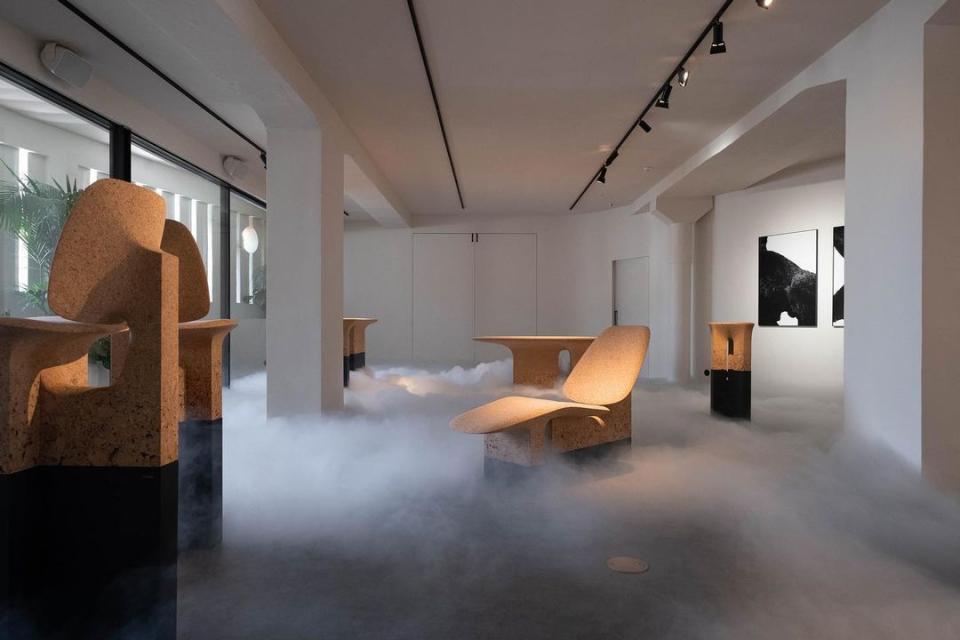
“Super-beautiful work” is how Cavalcanti describes the project of French designer Noé Duchaufor-Lawrance, a strong celebration of Portugal’s natural materials.
Museu de Arte Popular
“It’s the essence of Portuguese artisanship,” says da Silva.
Museu do Traje
“People don’t talk about this museum,” says Miranda, noting its out-of-the-way location. But he loves it for its celebration of traditional Portuguese clothing and its location in a 19th-century palace with a lovely garden.
Museu do Azulejo
Most people who visit Lisbon fall in love with the colorful tiles that decorate many of the buildings. This well-curated museum is the perfect place for a deep dive.
Tabacaria Mónaco
One of the first stores to sell cigars and cigarettes in Lisbon—and later, home to one of the first public telephones—this little sliver of a newsstand is dripping with history. Miranda recommends stopping in to admire the long counter made of Brazil wood, the tiles and swallows (a symbol of Lisbon) by the important sculptor Rafael Bordalo Pinheiro, and the painted glass and ceiling paintings by António Ramalho.
Follow House Beautiful on Instagram.
You Might Also Like

